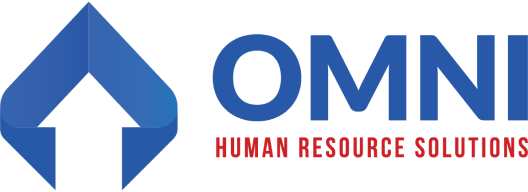With excitement building among fans about a possible fourth season of Ted Lasso, it’s a perfect time to revisit what makes this fictional coach so compelling—and so relevant to real-world leadership. Ted Lasso may have started as a fish out of water in the world of English football, but his people-first approach to coaching offers powerful lessons for any workplace.
In organizations across industries—from healthcare, professional services, and manufacturing to education, government, and nonprofits—leaders are increasingly recognizing the importance of coaching as a critical tool for engagement, development, and retention. Whether you’re leading from the front lines or the executive suite, Ted Lasso’s coaching style reminds us that belief, empathy, and humility can transform individuals and teams alike.
This blog explores how to bring coaching into every layer of your organization through examples of employee coaching, actionable leadership strategies, and a thoughtful look at how tools like workplace assessments can support stronger outcomes.
Why Coaching Matters in the Modern Workplace
Strong coaching fuels stronger teams. In today’s evolving work environments, effective coaching helps:
- Build leadership skills across departments
- Support strategic employee development and retention
- Drive improved employee engagement
- Encourage collaboration and problem solving
- Strengthen cross-functional communication skills
- Help team members and leaders alike develop new skills and confidence
Coaching differs from mentoring in one important way: it doesn’t focus on giving advice. Instead, coaching empowers individuals to discover their own solutions. Through reflective dialogue, active listening, and insightful questioning, coaching helps people grow on their own terms.
Lasso’s Lessons: Coaching With Heart, Humor, and Humanity
Ted Lasso’s coaching style is refreshingly authentic. He may not know much about soccer when he arrives at AFC Richmond, but he understands people—and that’s what sets him apart.
1. Start with Active Listening
Ted listens before he leads. Whether it’s a quiet moment with a struggling player or a conversation with a colleague, he creates space for self-reflection, connection, and growth through active listening.
Workplace takeaway: Listening is the foundation of every productive coaching session. It helps employees feel heard, respected, and empowered to develop their own solutions.
2. Appreciate the Whole Person
Ted sees more than performance metrics—he sees people. He builds trust by valuing the unique contributions of each individual and fostering a culture of support.
Workplace takeaway: Recognition and inclusion create the conditions for good coaching, allowing employees to explore challenges and build confidence in a safe environment.
3. Coach With Self-Awareness
Ted doesn’t shy away from his own growth journey. His openness about anxiety and mistakes sets the tone for transparency and learning.
Workplace takeaway: The most effective coaches model vulnerability and self-awareness, helping others reflect, own their decisions, and seek growth.
4. Set Goals That Matter
Ted inspires his team by focusing on personal and collective growth—not just the scoreboard. He encourages each individual to define success on their own terms.
Workplace takeaway: In coaching, helping others set goals that align with their strengths and values fosters purpose, ownership, and momentum.
Examples of Employee Coaching at All Levels
Coaching should be part of the employee experience from day one – from entry level roles to the executive suite. Below are four examples of employee coaching tailored to different levels within an organization, each designed to support growth and development, build confidence, and unlock potential:
1. Entry-Level Employee
In a local government agency, a new administrative assistant is learning the ropes in a fast-paced office. Through weekly check-ins and structured coaching sessions, their supervisor uses thoughtful questions to help them prioritize tasks and create a personal action plan. The emphasis is on building confidence, problem-solving independently, and developing professional habits.
2. Team Manager or People Leader
At a private K–12 school, a first-time department head is struggling to manage workload distribution and improve employee morale. Biweekly coaching from an internal leader helps the manager reflect on team dynamics, identify blind spots, and experiment with better ways to improve communication. The coach doesn’t prescribe answers—they guide inquiry that strengthens decision-making and trust.
3. Senior Manager or Department Leader
In a healthcare organization, a department director is leading a major systems change. Coaching focuses on helping them clarify strategy, anticipate resistance, and motivate stakeholders through influence. The process helps them develop clarity, self-assurance, and the tools to lead others through uncertainty with strong coaching processes.
4. Executive and C-Suite Leaders
A nonprofit CEO engages in executive coaching to deepen their self-awareness, reflect on organizational culture, and align strategy with purpose. With a confidential partner, they work through leadership dilemmas, assess communication patterns, and build capacity to lead with clarity and impact—without being given the answers.
Across all four tiers, these examples of employee coaching illustrate how personalized, inquiry-based guidance helps people unlock their own capabilities and drive results from within. As part of a comprehensive learning and development strategy, coaching supports not only individual growth but also long-term business success—reinforcing the idea that learning and development are key drivers of organizational performance.
The Role of Executive Coaching
Senior leaders face unique challenges: shaping culture, influencing change, and staying grounded amid complexity. Executive coaching provides a reflective space to ask better questions, explore blind spots, and build deeper alignment.
Through structured coaching sessions, executives can:
- Strengthen strategic thinking and self-regulation
- Enhance team leadership and communication skills
- Align personal values with organizational direction
- Build resilience while supporting emerging leaders
- Navigate uncertainty using insight rather than instinct
Ted Lasso reminds us that leading with heart is powerful—but so is leading with intention. Executive coaching helps leaders clarify how they show up, so they can empower others more effectively.
Assessment Tools: Coaching’s Secret Weapon
In sports, coaches use data and observation to refine performance. In the workplace, assessments like DiSC, CliftonStrengths, and EQ tools support self-discovery and more effective coaching.
Used within a coaching framework, assessments help:
- Uncover communication preferences
- Reveal motivational drivers and coaching style tendencies
- Equip managers to coach with more empathy and insight
- Foster appreciation of diverse work styles among team members
- Inform personalized employee development strategies
Let OMNI Help You Build a Coaching Culture That Lasts
Whether you’re just getting started or ready to elevate your coaching practices, OMNI Human Resource Solutions can help.
We offer:
- Executive and leadership coaching
- Manager development in practical, inquiry-based employee coaching
- Tailored workplace assessments to enhance coaching outcomes
- Customized support across industries and organizational levels
- Strategic consulting to embed coaching into your leadership ecosystem
Assessments support—not replace—coaching processes. They offer a foundation for meaningful conversations that fuel growth and autonomy.
Coaching Is Culture, Not a Checklist
The best organizations treat coaching as a mindset, not an HR function. Here’s how to cultivate a culture where good coaching thrives:
- Train leaders and managers to coach—not direct
- Reinforce coaching style through daily leadership behavior
- Use coaching conversations to empower—not instruct
- Make space for learning, reflection, and experimentation
- Track outcomes related to improved employee engagement and retention
Ready to coach like Lasso? Contact OMNI today and let’s start building your coaching culture to fuel performance, connection, and growth.

Authored by: John Fink, Senior Consultant

